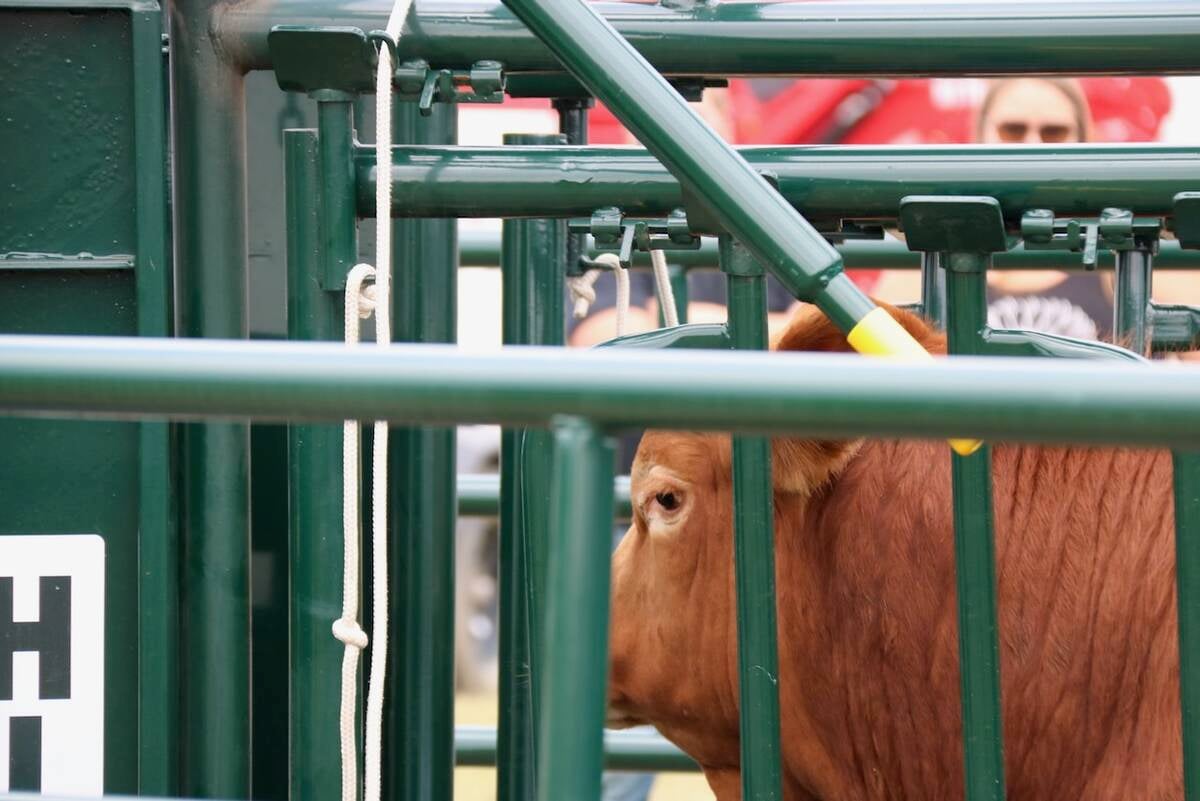This year, an oral supplement called Vitaferst, designed for newborn ruminants (calves, lambs and goat kids) was launched.
Apart from selenium and the fat-soluble vitamins A, D, and E, which are normally injected at birth requiring two separate needles, it contains one other mineral and one other vitamin.
The product is formulated to have similar amounts as the injectable products but it also contains iron and the water-soluble vitamin B12.
We all know that suckling calves on mothers’ milk can run into deficiencies, which is why producers in Western Canada generally supplement with these vitamins and minerals.
Read Also

Good handling equipment a must on cattle operations
It’s important for the safety of producers and everyone else dealing with their stock that handling equipment is functional and safe.
The ability to substitute an oral product for a couple of needles when dealing with newborn calves is much preferred. The pain and stress of an oral product is far less than needles.
The pharmacy company that developed this product also did some looking into iron levels and found that calves are born lower in iron. I don’t recall talking about iron in calves in veterinary medicine but for as long as I can remember piglets are given a source of iron either orally or as an injection, so it makes sense that supplementing calves with iron could have a big benefit.
The good news about iron is once one gets it into the calves, little is excreted. The only real iron loss would be with blood loss. There were multiple vitamin B products that also contained iron and copper elements to treat problems such as blood loss and chronic infections that gradually deplete these minerals.
Extra iron is a relatively inexpensive supplement and Vitaferst contains the form of iron that is most readily absorbed. That is the same with vitamin B12, which has appetite stimulating qualities and are needed for things like cell growth and maturity. Calves get a lot of B12 in colostrum, but milk is low in things like B12 and selenium. With rapid animal growth, deficiencies can result.
Nutritionists can help look after our cattle herds by balancing rations and ensuring that mother and fetus nutrition is looked after. A critical time is after birth with milk being the sole source of nutrition for the first four to six weeks of life. That is why most cattle producers in Western Canada give supplements to newborn calves.
We also know that most cattle-producing areas of Western Canada are selenium deficient.
The product comes with a syringe to pull off the product (dosage is one cc per five kilograms of weight in cattle and three cc per five kg lamb). With a 100-pound (45 kg) calf receiving nine cc dose, those administering it tell me the calves take it well. What I like from a practical standpoint it comes with a fridge magnet dosage chart and a 250-cc bottle so it can do 30 or so calves.
It is not a prescription product and will be available at the regular channels like veterinary clinics, feed stores, feed mills and other common livestock supply sites.
It can be kept at room temperature and the consistency of it makes it easy to administer.
Ask the professionals you trust such as your veterinarian, nutritionist, feed mill, or breed organization about their thoughts on this product.
I know in researching costs, it was about the same as the two shots previously given. The iron and vitamin B12 are a bonus.
The label states you can repeat the dosage in three to four weeks if your veterinarian recommends it. It is harder to handle a calf at that age but depending on your processing plan, it may fit.
Newborn calves up to two days old are easy to handle and inquisitive making it easy to give oral supplements or intranasal vaccines.
Those producers who give their calves no supplements at birth may have gotten away with it, but as calves grow quicker and with variable growing conditions of the feed, we are seeing clinical cases of white muscle disease and vitamin deficiencies.
As with all things with calf health, talk to your livestock health-care providers for the final say on this one.
Roy Lewis works as a veterinarian in Alberta.















